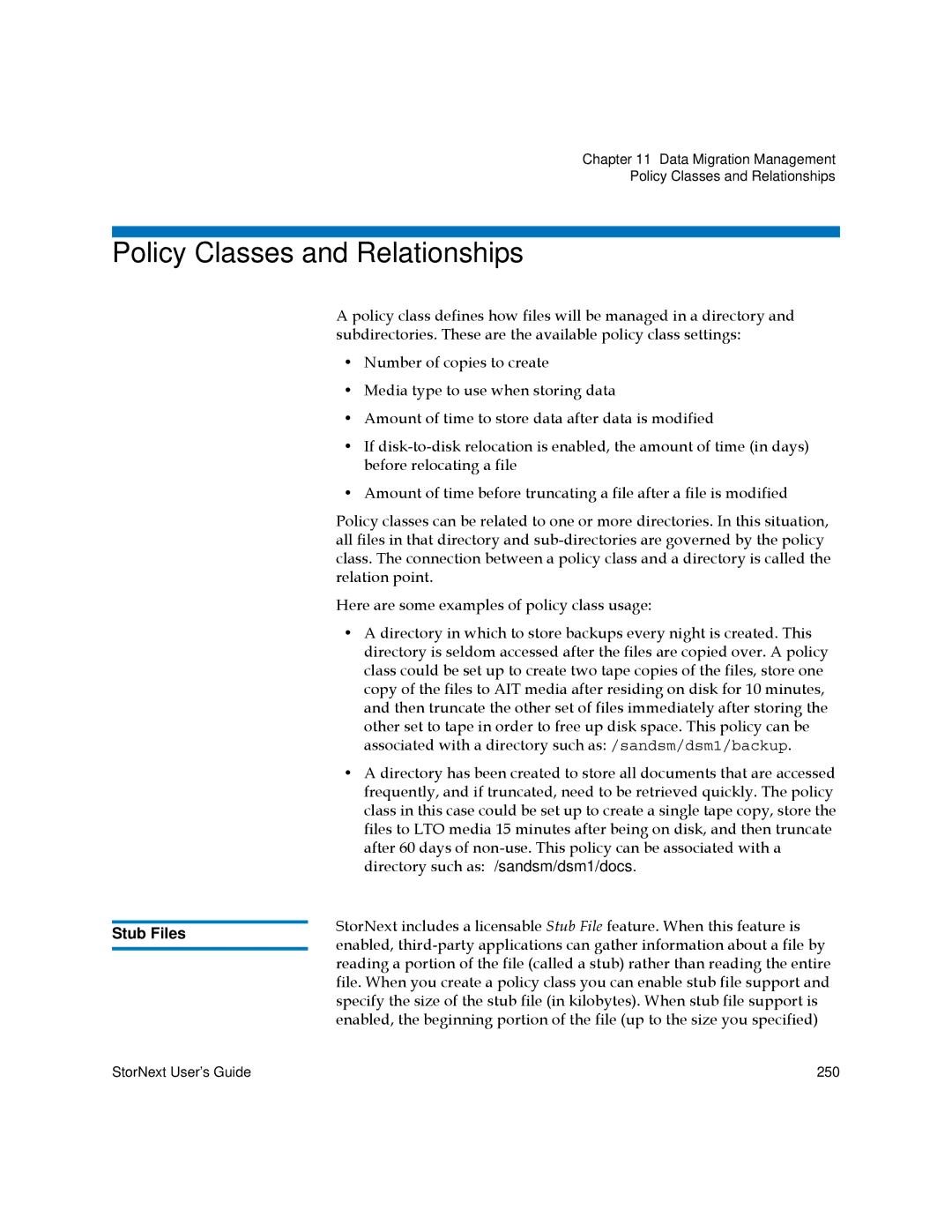Chapter 11 Data Migration Management
Policy Classes and Relationships
Policy Classes and Relationships
A policy class defines how files will be managed in a directory and subdirectories. These are the available policy class settings:
• Number of copies to create
• Media type to use when storing data
• Amount of time to store data after data is modified
• If
• Amount of time before truncating a file after a file is modified
Policy classes can be related to one or more directories. In this situation, all files in that directory and
Here are some examples of policy class usage:
• A directory in which to store backups every night is created. This directory is seldom accessed after the files are copied over. A policy class could be set up to create two tape copies of the files, store one copy of the files to AIT media after residing on disk for 10 minutes, and then truncate the other set of files immediately after storing the other set to tape in order to free up disk space. This policy can be associated with a directory such as: /sandsm/dsm1/backup.
• A directory has been created to store all documents that are accessed frequently, and if truncated, need to be retrieved quickly. The policy class in this case could be set up to create a single tape copy, store the files to LTO media 15 minutes after being on disk, and then truncate after 60 days of
| StorNext includes a licensable Stub File feature. When this feature is | |
Stub Files | ||
enabled, | ||
| ||
| reading a portion of the file (called a stub) rather than reading the entire | |
| file. When you create a policy class you can enable stub file support and | |
| specify the size of the stub file (in kilobytes). When stub file support is | |
| enabled, the beginning portion of the file (up to the size you specified) |
StorNext User’s Guide | 250 |
